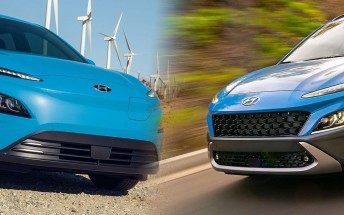New GSMA mobile engagement study finds almost half of mobile users still only talk and text

It's not everyday you see an endeavor of this scale and potential importance to the mobile realm. GSMA has take upon itself to create and start conducting a new annual study and calculate what it is calling the new Global Mobile Engagement Index (GMEI). It is an unique figure that measures the population's level of engagement with mobile phones, taking into account both types of use cases and frequency. The gathered data covers smarthpones and more traditional handsets and spans across 56 countries (32 developing, 24 developed), at 1,000 online survey respondent (18+) per country, effectively representing around 80% of the global population.
It is a truly monumental effort, employing a carefully selected set of 29 mobile use cases and rating each participant on both number of services used and frequency. The end goal is to give a clear and comparable index per country, but also create a comprehensive categorization system among the users themselves. GSMA has used said 29 use cases to coin four categories: "Aficionados", "Pragmatists", "Networkers" and "Talkers". We will include select parts of the report for you to read on the definitions, but we also highly suggest hitting up the source link and browsing through the various infographics it has to offer.
On to the punchline then: "Almost Half of Mobile Users Still Only Talking and Texting". According to GSMA, that is a fact and when you think about it, it's not really that surprising. Not only are traditional cellphones and feature phones still well in circulation, there are a lot of regional, age and tech literacy factors to account for as well. This leaves us with 47% "Talkers" in 2016, although GSMA believes current trends will relatively quickly shrink that number down to 29% in 2030.
There are some other interesting insights the data at hand has to offer. For instance, it turns out good old SMS is still more frequently used than online messaging services in several mature markets, like France and the US. A lot of this has to do with the wide availability of "unlimited text" carrier offers - just one of the interesting facts GMEI accounts for. It might also interest you to learn that not only is the tech-savvy crowd pushing its upper age cap year on year, but in certain places, older generations turn out the be quicker adopters. In South Korea, around 80% of "Baby Boomers" (age 51 to 69) use their devices to make purchases online.
While on the topic, it turns out a whopping 70% of smartphone users globally use their connected mobiles to get information about products and services, prior to purchasing them. However, only two out of three will make the order, or book the service on the device itself. This is definitely the kind of information online businesses would crave. Other unearthed trends could even help guide potential efforts to aid local conditions. For instance, Myanmar ranks high in terms of smartphone ownership, but over 60% of users claim they are prevented from taking full advantage of the technology, due to lack of regionalized content.
Last, but not least, as an added bonus, GSMA has also provided an online survey, to find out where you land on their new user scale.
Related
Reader comments
- Anonymous
- 20 Feb 2017
- 8qA
Iphone know this very well.
- AnonD-581935
- 19 Feb 2017
- fJC
how they manage to collect the data of offline games or those who use custom roms or those install games from torrent sites p.s: please dont judge me, I am a poor person and student :'(
- Anonymous
- 19 Feb 2017
- kwV
Talk and text are the basic things we need everywhere. On the go, we maps, weather, music and news. If we work 8 hours a day, we don't have time for anything else.













 Huawei
Huawei Samsung
Samsung Apple
Apple Xiaomi
Xiaomi Xiaomi
Xiaomi


